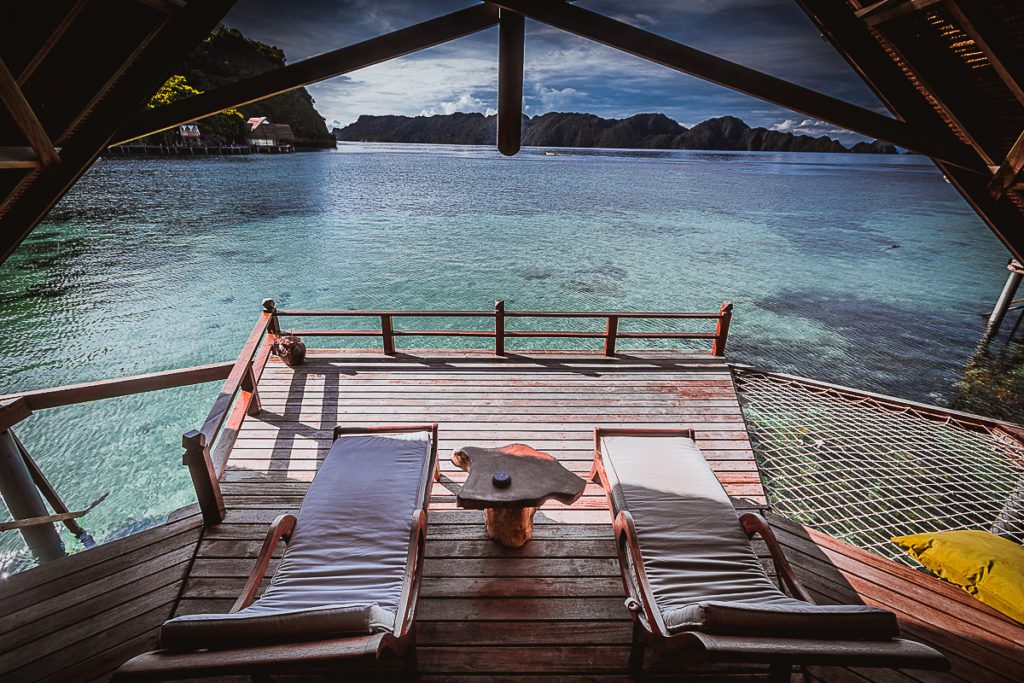Raja Ampat is an archipelago off Indonesia’s West Papua province. Translated to “Four Kings,” it comprises over 1,500 islands with four main ones: Batanta, Waigeo, Salawati, and Misool.
With spectacular scuba diving, breathtaking scenery, and a unique indigenous culture, Raja Ampat offers epic adventures. You can dive amongst coral reefs bursting with marine life, trek jungle foothills amid exotic birds, or relax at an island resort.
Despite being in a critical global coral reef region, Raja Ampat retains a pristine serenity thanks to sustainable visitor limits that maintain its raw beauty. Here, discover heaven on earth through exceptional nature and warm local communities.
This Raja Ampat TRAVEL GUIDE shares everything you need to plan a fantastic Raja Ampat visit!
How to Get to Raja Ampat
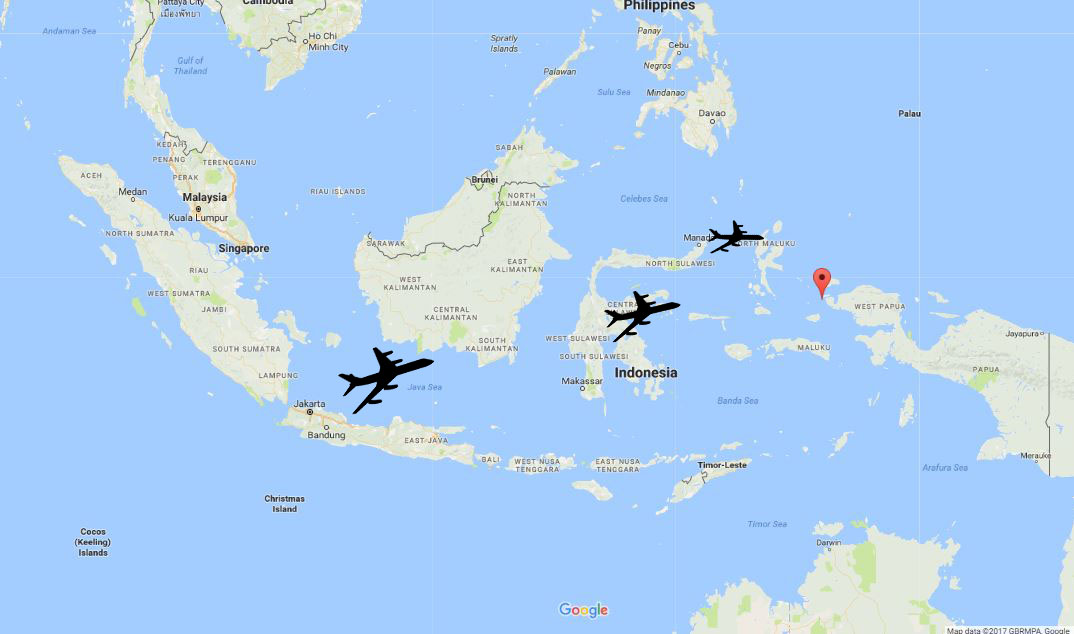
Reaching the sublime shores of Raja Ampat requires special effort given its distance from any major cities. But well worth it! Here is a guide on how to access this stunning island paradise:
Fly to Gateway City Sorong
The easiest route starts by flying into Domine Eduard Osok Airport (SOQ) in the port city of Sorong on the western tip of Papua’s Bird’s Head Peninsula, nearest to Raja Ampat. This serves as the gateway for reaching the archipelago.
Major carriers, including Garuda Indonesia, Sriwijaya Air, Batik Air, and Nam Air, operate regular direct flights to Sorong from hubs like Jakarta, Makassar, and Manado. Expect ~4 hour flights from Jakarta or 1-2 hours from other Indonesian cities.
Take Plane or Ferry to Raja Ampat Islands
From Sorong, visitors can choose between flight or ferry to access the islands and dive sites of Raja Ampat itself:
By Air: Small propeller planes whisk visitors from Sorong to Marinda Airport (MWI) located in Waisai, the modest capital of Raja Ampat Regency. Wings Air and Susi Air run these 40 minute connections out to the islands.
By Sea: Slower but cheaper ferry crossings also link Sorong to Waisai, with both express (2-3 hours) and local (4+ hours) options making the trip twice daily. The route crosses the equator – cool!
Finally, from Waisai small boats provide transfers to specific Raja Ampat islands like Misool, Gam, Batanta or Waigeo.
So, in summary: Fly into Sorong first, then choose a plane or ferry to reach the gorgeous Raja Ampat!
Top Things To Do
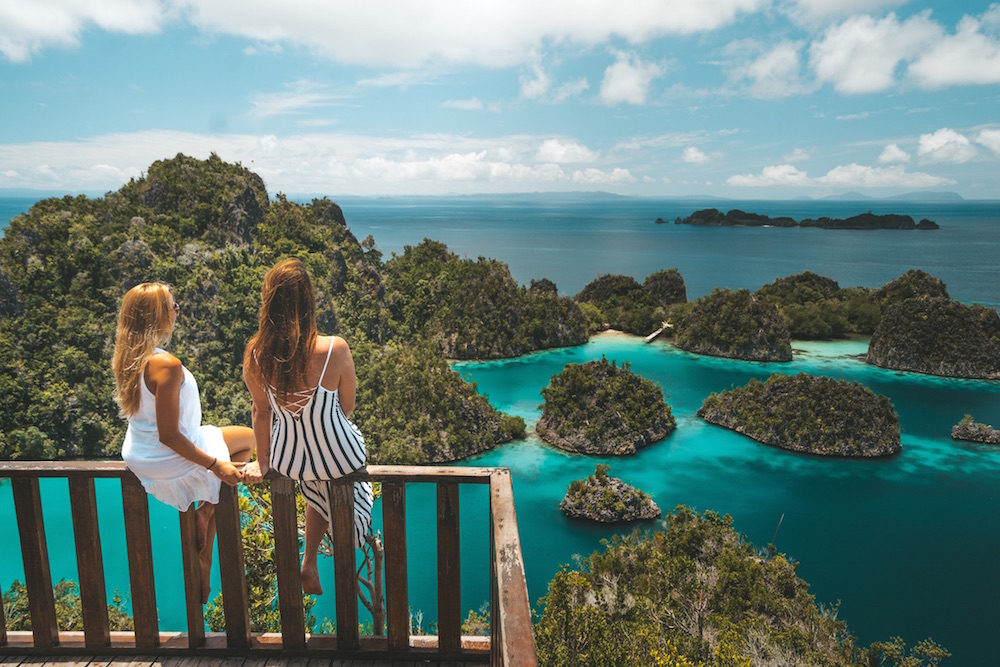
From world-renowned dive sites to jungle-clad peaks and picture-perfect beaches, Raja Ampat serves up endless adventures. Here are some top attractions and activities for your trip:
Dazzling Dive Sites
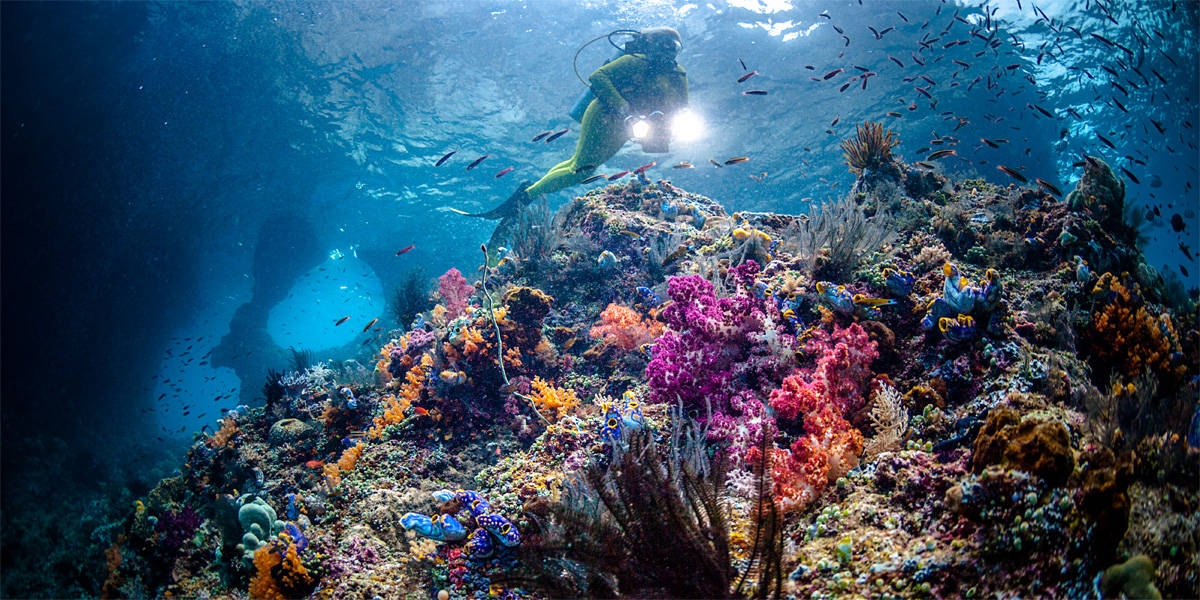
One of Raja Ampat’s premier attractions lies hidden below the waves – exceptionally diverse and vibrant coral reef ecosystems harboring a kaleidoscopic array of marine life.
Scuba Diving – Advanced divers flock to renowned spots like:
- Cape Kri – Set record for most fish species identified on single dive (374)!
- Friwen Wall – Encounters with massive giant trevallies, sharks and giant sea turtles. Huge sea fans.
- The Passage – Unique pinnacles and mosaic-like reef structures with phenomenal biodiversity.
Snorkeling – Shallower reefs offer beginner-friendly encounters:
- Arborek Jetty – Colorful gardens with clownfish, angelfish and reef sharks near water’s surface
- Yenbuba – Isolated cove, high chance of sea turtle and blacktip reef shark sightings
With over 1,500 fish species and 600 coral types, Raja Ampat offers snorkelers and divers alike phenomenal underwater sights!
Island Hopping
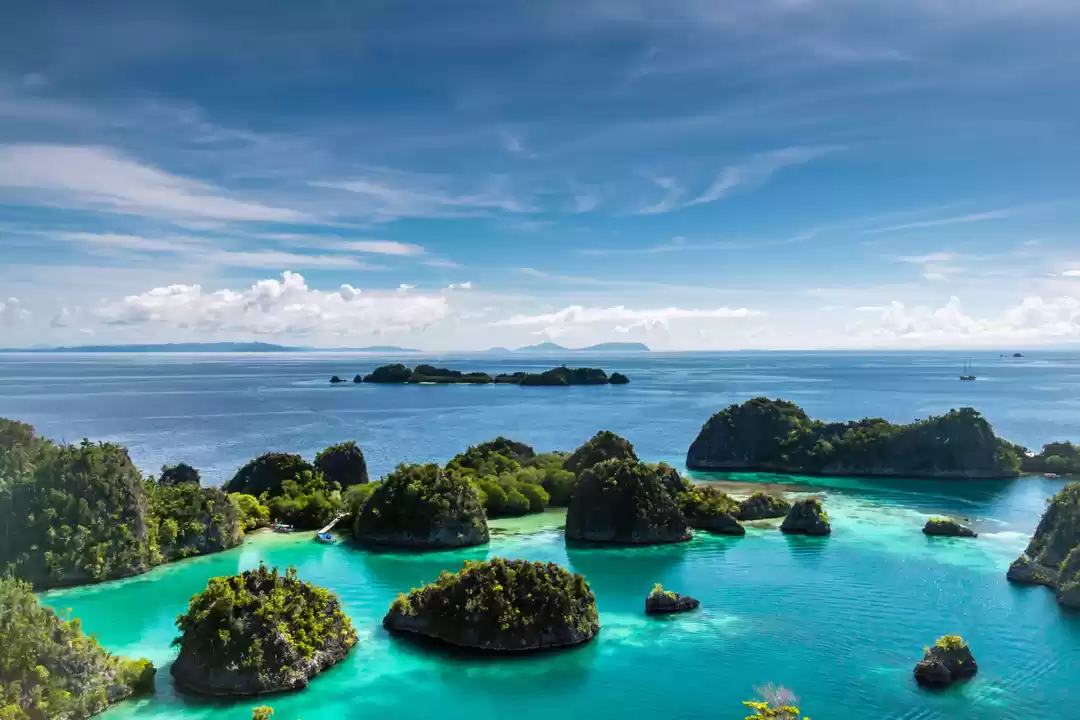
Raja Ampat’s 1500+ islands provide endless opportunities for idyllic beach escapes and jungle adventures. Charter boats let you freely explore this stunning seascape.
Top island destinations include:
- Piaynemo – Iconic postcard viewpoint overlooking karst islets jutting from the sea
- Wayag – Stunning uninhabited islands with soaring forested mountains, hidden coves with umbrella-shaped overhangs, and exotic birds like Wilson’s Bird-of-Paradise
- Fam Islands – Rugged islands covered with nutmeg orchards and jungle hideouts surrounded by reefs teeming with 3000+ species of subaquatic life
With so much to discover across Raja Ampat’s far-flung islands, it’s easy to spend days awestruck by nature’s masterpieces.
Jungle Trekking & Wildlife
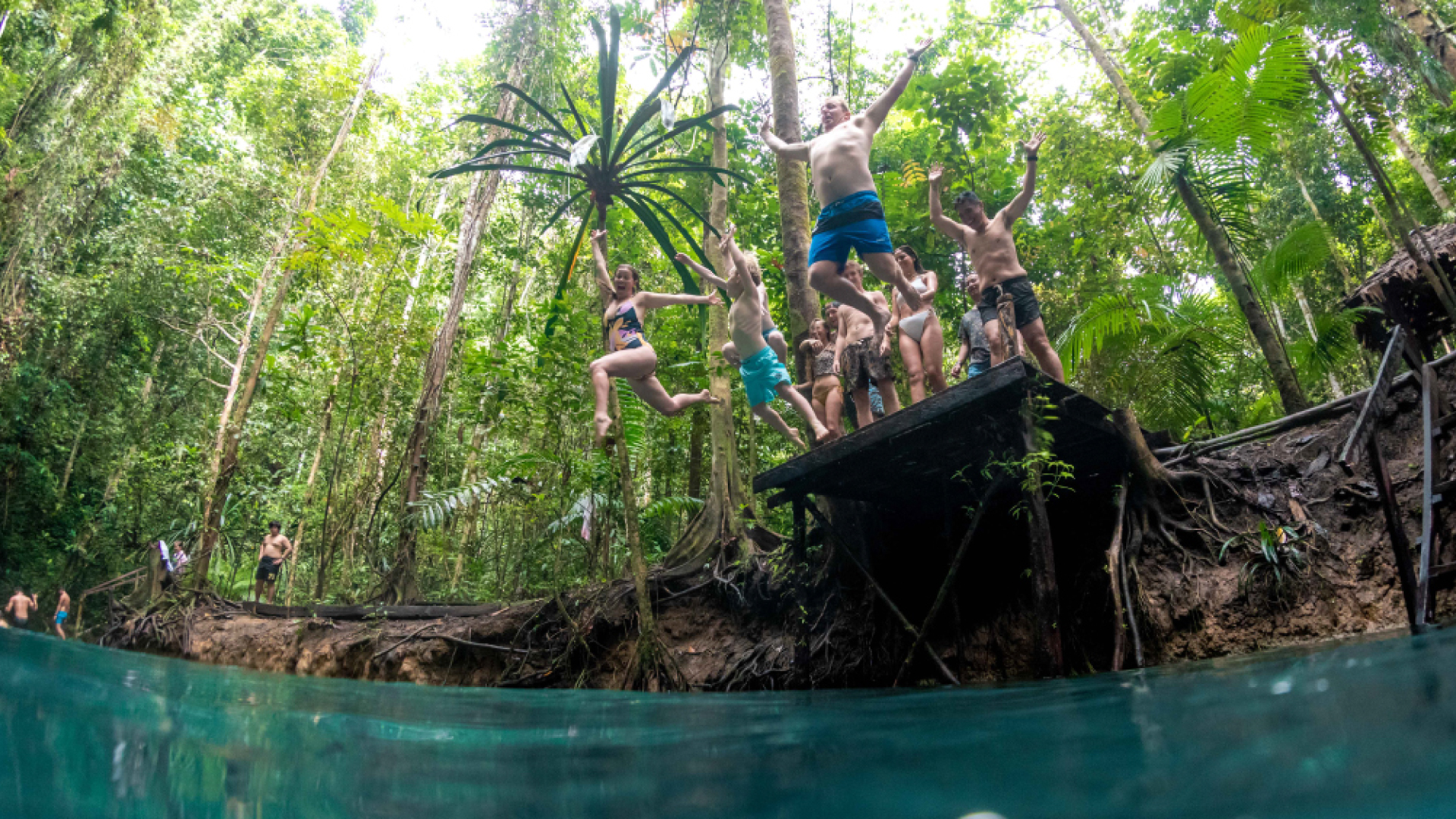
Raja Ampat’s thick inland jungles offer intrepid trekkers chances to spot exotic birds and rare endemic wildlife. Key highlights:
- Red Bird of Paradise – Brilliant crimson plumage; found in Waigeo’s forests
- Waigeo Cuscus – Cat-sized marsupial in Phalangeridae family, endemic to Raja Ampat
Guided hiking tours reveal Raja Ampat’s unique species, many found nowhere else on Earth.
Cultural Immersion
Beyond nature, visitors can experience traditional Papuan island culture by staying in thatched-roof homestays at villages like Sauwandarek and Arborek dotted across the islands of the Four Kings.
Here you’ll mingle with wonderfully hospitable locals and experience everyday routines, cuisine, music and crafts in Raja Ampat’s timeless communities.
So take part in a spirited sago dance welcome, join a handicraft workshop, or try tasty fish roasted in banana leaves at an island feast! Cultural immersion brings impressive depth.
Where to Stay
Raja Ampat provides wonderful lodging options across Batanta, Misool, Waigeo, Gam and other islands. Choose your ideal escape based on amenities and budget:
Luxury Island Resorts
Indulge with pampering amenities and direct access to spectacular nature at secluded island retreats like:
- Misool Eco Resort ($500+ nightly) – Stilted water cottages, exceptional dining, luxury PADI dive center
- Raja4Divers ($300+ nightly) – Sophisticated beachfront villas with infinity pools surrounded by jungle
Mid-Range Boutique Hotels
Find the right balance of comfort, quality service and value at peaceful sanctuaries like:
- Kri Eco Resort ($100-200 nightly) – Traditional bamboo bungalows with modern bathrooms plus dedicated dive team
- Papua Paradise Eco Resort ($150-300 nightly) – Hillside Jungle Suites with sweeping ocean views steps from renowned Cape Kri dive site
Homestays & Guesthouses
Go local and save money with backpacker homestays in traditional seaside villages, often linked to conservation or community development projects. Expect basic lodging around $50/night with shared facilities. Try local favorites like Yenkoranu Homestay or Cinta Raja.
So whether you seek luxury, convenience or cultural immersion during island life, Raja Ampat has wonderful lodging to meet your needs and budget!
Budget & Planning
Given Raja Ampat’s isolated location and limited infrastructure, visiting requires greater time, expense and planning than more mainstream destinations in Indonesia. But witnessing these unspoiled wonders makes it worthwhile for many.
Here is a realistic breakdown of costs:
Flights & Transportation
- $250-500+ roundtrip airfare from cities like Jakarta or Bali to Sorong
- $50-150 for flights between Sorong, Waisai or other Raja Ampat airports
- $100+ for boat transfers between islands
Accommodation
- $50+ per night for community homestays
- $100-300 nightly for comfortable island hotels
- $500+ nightly for premium resorts
Diving & Excursions
- $65+ per scuba dive with gear rental
- $100+ for full days fun diving
- $50+ for snorkeling tours
So expect $2,000+ per person for a weeklong all-inclusive Raja Ampat trip, allowing ample time for world-class diving, island hopping and relaxing in this exotic island paradise!
What to Pack
When visiting Raja Ampat’s tropical islands, useful items to pack include:
- Mosquito Repellent – Bring enough 17-25% DEET or 20% Picaridin formulas to prevent Dengue, Malaria and other mosquito-borne illnesses
- Reef-Safe Sunscreen – Mineral sunscreen without chemicals like Oxybenzone helps preserve delicate coral ecosystems
- Water Bottle – Stay hydrated in the heat and humidity while minimizing plastic waste
- Dry Bags – Keep gear dry and protected during aquatic adventures
- Light Rain Jacket – Useful for sporadic tropical downpours or breezy boat rides
- Sandals – Perfect island footwear for hopping on and off boats
- Hat & Sunglasses – Shade from powerful equatorial sunshine
- Lip Balm – Prevent painful chapping or blistering
- Cash in Indonesian Rupiah – Many islands have limited infrastructure. ATMs are scarce.
With proper preparation, you’re ready to embark on an unforgettable tropical escape in spectacular Raja Ampat! No passports required, just a spirit for adventure.
Final Impressions
For diving enthusiasts, nature lovers, culture buffs and adventure travelers alike, Raja Ampat represents one of the most phenomenal and pristine island destinations on the planet. Despite the greater complexities of reaching this far-flung archipelago, its vibrant coral ecosystems, breathtaking karst topography and warm-hearted Papuan culture make it an unmissable bucket list journey.
Through diligent ecosystem protections spearheaded by passionate local communities, visitors can witness Raja Ampat’s exotic underwater worlds and jungle paradises nearly as unspoiled as when pioneering European explorers first stumbled upon these shores.
So as you plan future travels when borders re-open, consider adding a dip into Raja Ampat’s clear blue waters and lose yourself amid stirring mountainous landscapes during island hikes. No matter your budget or interests, with good guidance you’ll unlock deeply moving experiences across this unique corner of Indonesia.
FAQ About Visiting Raja Ampat
How do I get to Raja Ampat?
To reach Raja Ampat, first fly into Sorong Airport. From there, take a 1-hour flight or 2-3 hour ferry to Waisai. Then, take a boat to your specific island.
Is Raja Ampat expensive?
Yes, visiting Raja Ampat is a significant expense given its remote location. Budget at least $100/night for basic accommodation and $2000+ per person for a week-long diving vacation. Flights, boats, tours and gear rentals add up.
How to get to Raja Ampat from India?
The fastest way is to fly from Mumbai to Jakarta, then from Jakarta to Sorong, taking about 18 hours in total. Expect to spend ₹24,000 – ₹75,000 on airfare. The ferry route takes much longer.
What makes Raja Ampat famous?
Raja Ampat is famous for having some of the world’s most biodiverse coral reefs and a tremendous diversity of marine life in crystal clear waters around over 1,500 picturesque tropical islands.
Why is Raja Ampat so expensive?
High costs in Raja Ampat stem largely from its remoteness and lack of infrastructure. Reaching this island paradise takes effort. Fuel and transport between islands is also very expensive.
How to go from Bali to Raja Ampat?
Fly from Bali to Jakarta or Makassar first, then take another flight to Sorong and ferry to Raja Ampat. Or fly direct from Bali to Sorong on some carriers.
Is Raja Ampat safe?
Yes, Raja Ampat is generally safe. While poisonous snakes and insects do exist on some islands, dangerous encounters are extremely rare. Most creatures avoid humans.
Is Raja Ampat suitable for beginners?
Yes. Exceptional pristine reefs exist for beginner divers and snorkelers. Just be cautious of currents when choosing sites. Many areas are well-protected lagoons. Training is recommended.
Can you swim in Raja Ampat?
Absolutely! Over 90% of Raja Ampat’s spectacular marine biodiversity lives just 4 meters below the surface, making swimming a fantastic way to explore. Note swimmer safety protocols.
How many days do you need in Raja Ampat?
Most recommend a minimum 7 days to relax into island life and appreciate Raja Ampat properly through diving, hiking, beach lounging and more. 2 weeks allows you to see more.
Which airport is near Raja Ampat?
The closest airport to access Raja Ampat is Domine Eduard Osok Airport (SOQ) located in the port city of Sorong on Indonesia’s West Papua province. This is your gateway.
When to visit Raja Ampat?
Visit during the dry season from October to April for calmer waters and excellent visibility while diving and snorkeling. This equates to the rainiest period in the rest of Indonesia.

